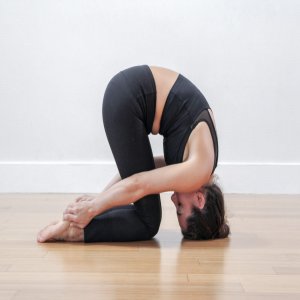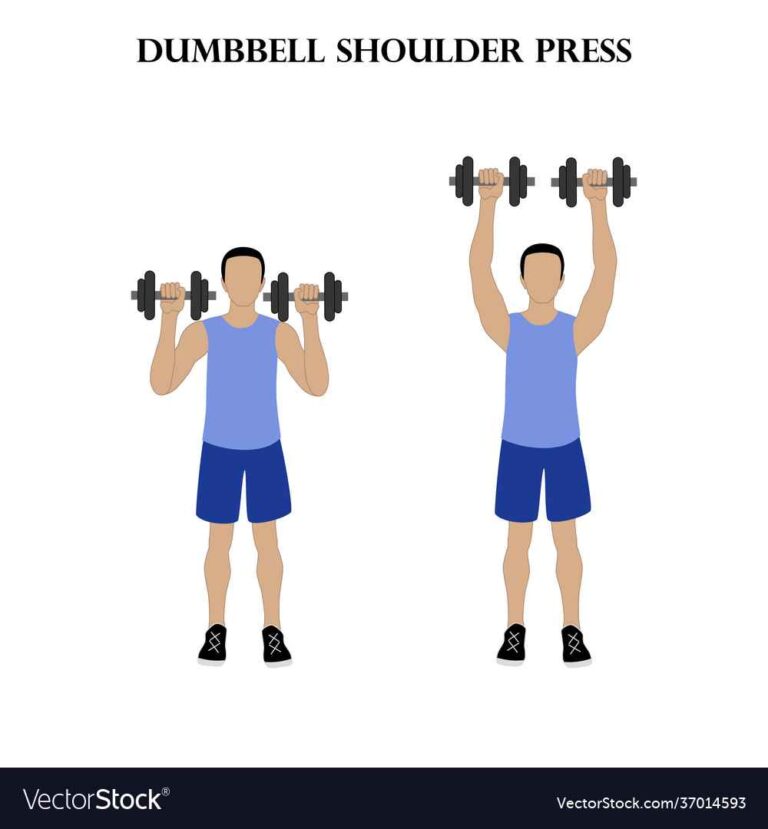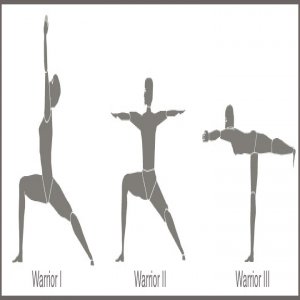6 Best Exercises For Stiff Fingers
Introduction
- A restriction in the finger’s range of motion is referred to as a “stiff finger,” a condition that can be caused by a variety of factors and affects several separate structures. Finger stiffness can be brought on by nearly all finger injuries as well as some illnesses.
- Although there may be other reasons, arthritis is frequently the cause of stiff fingers. These include an injury, carpal tunnel syndrome, or tenosynovitis, which results in a trigger finger.
- Medical attention, home cures, and stretching could be beneficial.
- A person may have stiff fingers during a certain time of day, which might indicate a medical issue.
- This might support a physician’s diagnosis.
- A doctor must identify the source of stiff fingers before recommending the best course of action.
- This article examines the many reasons why fingers get stiff as well as the potential remedies.
- It also outlines a few stretches and exercises that someone may perform at home to assist their hands in becoming more flexible.
Common Causes of Finger Stiffness
- Patients who are sent to a hand specialist frequently express concern about their fingers’ decreased range of motion.
- These issues often don’t start off suddenly instead, they usually develop gradually.
- There may or may not be a connection between the stiffness and decreased movement and discomfort.
- Patients typically lament that they are unable to engage in enjoyable hobbies due to a lack of fine dexterity or grip strength.
- Numerous injuries, arthritis, a locked trigger finger, and Dupuytren’s contracture are significant and frequent reasons for this lack of motion.
- Thankfully, these illnesses have therapies accessible.
- The common causes of finger stiffness and available treatments are discussed in the following article.
In the morning
- Someone may discover that their fingers are more rigid in the morning.
- Some conditions that produce stiff fingers in the morning are described in the sections below.
Dupuytren’s Contracture
- The hand’s palm is home to a number of crucial structures that support regular hand function.
- The hand and fingers are able to work because tiny nerves pass near tendons and muscles.
- These components are held together, cushioned, and separated by a thick layer of connective tissue known as the palmar fascia.
- It resembles the gristle found in flesh in both look and feel.
- This layer is often neither tactile nor visible from the skin’s surface.
- In Dupuytren’s contracture, fibromatosis, or a scar, forms on this layer.
- An Injury or bending of the fingers into the palm is caused by Dupuytren’s disease.
- Usually, there are visible cords in the fingers and palm that serve as tethers to prevent the fingers from fully opening.
- These cables may occasionally be accompanied by tiny skin nodules or pits.
- When the level of tethering makes it difficult for them to do daily tasks like delicate manipulation, handshakes, or reaching inside pockets, they usually seek medical attention.
- It’s also likely that the wires will make it harder to grip.
- The cables are usually not painful. A hereditary condition known as Dupuytren’s contracture can affect anybody, however, it is more commonly encountered in those with northern European heritage.
- Although the severity and course of the condition differ from person to person and cannot be precisely anticipated, past reactions to therapy and the rate at which the condition has progressed in the past can be used as broad guidelines.
- The goal of treatment is to restore function and let the fingers straighten up. Surgical methods for doing this include incising (cutting, but not removing), excising (removing) the cords in the palmar fascia, and administering Xiaflex injections.
- With the help of these particular injections, the chord is broken, allowing the finger to straighten up without the need for surgery.
- Based on your pattern and the degree of your Dupuytren’s contracture, an orthopedic hand expert can help you determine which of these treatments is ideal for you.
- The disorder known as Dupuytren contracture affects the hands’ fascia or the connective tissue that envelops the bones.
- The ring and pinky fingers are most frequently affected, and the illness is most prevalent in the morning.
- Type 1 collagen is the kind of collagen that is often found in the hand.
- In Dupuytren contracture, type 3 collagen takes its place.
- Changes in grip strength and hand mobility follow from this.
- Nodules develop along the tendons’ paths, eventually giving rise to cords that cause deformities associated with contractures.
- Dupuytren contracture patients may be able to feel the nodules on their palm side.
- The hands lose their range of motion as the cables get thicker and shorter.
- It might be challenging to straighten the Harmed fingers since they can constrict.
- Each has pros and cons.
Trigger Finger (Stenosing Tenosynovitis)
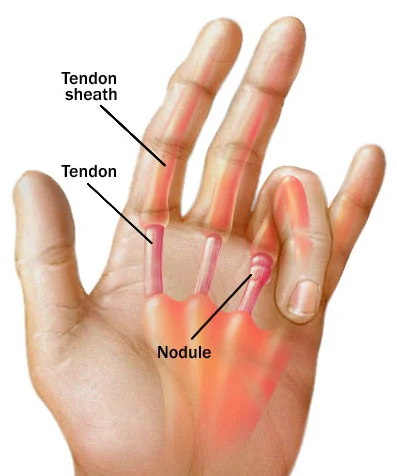
- Stiff fingers can result from a common ailment called trigger finger, also known as stenosing tenosynovitis.
- The tendon travels through a “tunnel” composed of a network of pulleys extending the length of a regular finger.
- The tendon may trap at the tunnel’s entrance when there is swelling, which can result from a variety of conditions.
- This is comparable, for instance, to thread, which is normally readily drawn back and forth through a needle’s eye, but becomes stuck at the needle when a knot forms in the thread.
- Similar to the trigger finger, the tendon may become trapped in the tunnel if the knot or swelling is large enough.
- It is important to examine other, less common disorders when making a diagnosis since they might be confused for a locked trigger finger.
- Trigger fingers often cause discomfort, locking or catching of the finger during movement, and sometimes a finger that is bent permanently.
- Injections of cortisone or steroids might be used as a first line of therapy for trigger fingers.
- An injection can result in a success rate of up to 75%.
- Another therapeutic option is to splint the finger in extension, however, these splints are rarely recommended since they are difficult to wear and frequently poorly tolerated.
- Surgery is the last option.
- In order to keep the tendon from being trapped, a little incision is made at the tunnel’s edge and it is “opened” during surgery.
- In the example of the needle and thread, this is like opening the needle’s eye to make it easier for the knot on the thread to go back and forth. Usually, surgery is a permanent solution to this issue.
- Tenosynovitis, often known as trigger finger, is a condition in which inflammation develops in the fluid that surrounds the tendons in the affected finger.
- Although it can affect any finger, the trigger finger often affects the thumb and ring finger.
In addition to making the affected joint difficult to move, this illness may cause:
- pain when bending or straightening the finger
- flushing
- swelling
- the affected finger becomes stuck in a bent position
- a sensitive lump on the hand’s palm side at the base of the finger
- a sensation that pops, locks, or catches when moving the fingers
Some potential causes of trigger finger include:
- autoimmune diseases including diabetes and rheumatoid arthritis
- overuse of the injured joint or an injury from repeated strain
- pathogenic organisms, like Staph infections or methicillin-resistant Staphylococcus aureus
- There may also be no established cause of the trigger finger.
The American Academy of Orthopaedic Surgeons states that extended periods of immobility, such as first thing in the morning, might exacerbate the affected finger’s stiffness and locking.
Arthritis
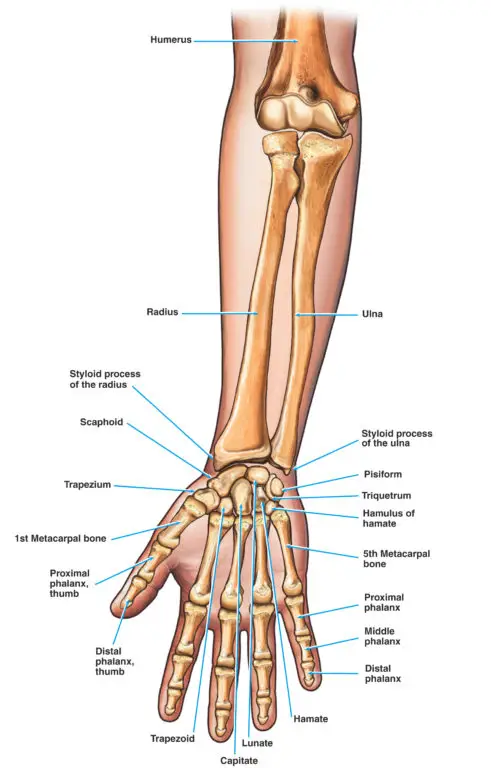
- It should be clear that arthritis is not always the cause of stiff fingers or hands, but it is still an important contributing element.
- Loss of the cartilage covering the tips of the bones, which permits smooth movement at the joints, is known as arthritis.
- Numerous factors, including heredity, aging, and traumas like fractures, might contribute to its etiology.
- Arthritis is usually, but not always, accompanied by joint discomfort and swelling.
- Finger defects can result from bone spurs that grow and expand the joints.
- The location affects how the arthritis is treated.
- Early on, NSAIDs (nonsteroidal anti-inflammatory medicines) including aspirin, naproxen, and ibuprofen may be beneficial.
- They usually grow less helpful as the arthritis becomes worse.
- Stronger anti-inflammatory drugs called “steroid injections” can be used to inject into joints to relieve arthritis symptoms.
- Braces or splints may also be helpful, depending on where the arthritis is located.
- In particular, customized bracing can aid with thumb base arthritis.
- Surgery may be an option for treating arthritis if non-steroidal anti-inflammatory drugs (NSAIDs), steroid injections, activity modification, and splinting are ineffective.
- The type of surgery needed for finger arthritis depends on where the arthritis is located.
- When the two bigger finger joints the Proximal and Middle Phalanx, as shown on this page are fused together, this can be one surgical alternative.
- One other surgical possibility is to replace a tiny joint.
- A fusion treatment eliminates discomfort by immobilizing the problematic finger joints.
- The goal of joint replacements is to reduce discomfort and preserve or increase the range of motion.
- When other therapies for arthritis are ineffective, the tiniest joints at the tip of the finger the Middle Phalanx and Distal Phalanx, as seen on this page are often fused together.
- This removes the discomfort and returns the tip of the finger to its usual look, but it also limits movement.
- Lastly, there are several surgical treatments available for thumb base arthritis, which is positioned between the Trapezium and the 1st Metacarpal Bone (seen on this page).
- Similar to hip arthritis, one surgical method for treating thumb arthritis involves removing the arthritic portion of the femur (thigh bone) and replacing it with a metal implant.
- When thumb arthritis occurs, the condition is treated by either removing the whole thumb bone or only a piece of it.
- Instead of using a metal implant to replace the lost bone, this may usually be accomplished with a suture or a tendon from the wrist region.
- Sprains, improperly healed fractures, and previous tendon injuries are also significant causes of finger stiffness and loss of mobility.
- These should always be taken into account in addition to other options in case of a stiff finger.
- Ask your orthopedic hand expert about your specific diagnosis and relevant treatment options if you have stiff fingers.
Osteoarthritis
- One type of arthritis that causes inflammation around the joints is called osteoarthritis. In the US, it impacts more than 32.5 million adult individuals.
- The deterioration or injury to the joint cartilage between bones is the cause of this disorder.
- The extended immobility experienced during sleep might lead to joint stiffness.
- One type of arthritis that causes inflammation around the joints is called osteoarthritis.
- In the US, it impacts more than 32.5 million adult individuals.
- The deterioration or injury to the joint cartilage between bones is the cause of this disorder.
- The extended immobility experienced during sleep might lead to joint stiffness.
The following other symptoms can also be present in an individual with osteoarthritis:
- joint discomfort that varies in strength
- swelling
- tenderness
- stiffness after getting out of bed
- decreased range of motion
- decreased flexibility
The following are typical outcomes of hand osteoarthritis, according to the American Society for Surgery of the Hand:
- the base of the thumb joint
- the joints closest to the fingertips
- the middle joint of the fingers
In addition to affecting the fingers, osteoarthritis can also cause pain in the neck, lower back, and joints including the foot, hips, and knees.
Rheumatoid arthritis
- Another type of arthritis is called rheumatoid arthritis. Being an autoimmune and inflammatory disease, it results in the body’s immune cells attacking healthy cells and inflaming particular body areas.
- In the morning, a person may feel stiff all over, including their fingers, and this stiffness may linger for many hours.
- The wrist and finger joints are frequently impacted by the illness.
- The disengagement of the fingers from the thumb is a distinct sign of rheumatoid arthritis.
- Additionally, the fingers may alter form; for example, the middle finger may become crooked and overextended.
- This may be referred to as a swan-neck deformity or a Boutonniere deformity by a physician. Rheumatoid arthritis patients may also experience pain while bending their fingers.
Other indications and signs of rheumatoid arthritis consist of:
- Multiple joints experiencing pain and stiffness
- Multiple joints exhibiting soreness and swelling
- fever
- fatigue
- weakness
- weight loss
- the same symptoms on both sides of the body
At night
On the other hand, a person can wake up with stiff fingers. Some disorders that result in stiff fingers at night are examined in the following sections.
Carpal tunnel syndrome
- The median nerve, which extends from the forearm into the palm, becomes compressed or constricted at the wrist and can result in carpal tunnel syndrome.
- Frequent numbness or tingling in the fingers, particularly in the thumb, index finger, and middle finger, is a common symptom of carpal tunnel syndrome.
- When sleeping down at night, symptoms frequently appear, and they usually go better during the day.
- But as the disease worsens, a person with carpal tunnel syndrome could also have discomfort during the day, particularly while performing repetitive tasks.
Hand tendonitis
- Inflammation and swelling of the tendons result in tendinitis.
- Sports and physical work are two examples of repeated activities that might cause it.
- When a person has hand tendinitis, they may feel discomfort outside of the joint, especially when they move it.
- Additionally, they could have edema in the affected location.
During pregnancy
- Carpal tunnel syndrome can occur in pregnant women.
- Hormones holding fluid cause carpal tunnel syndrome connected to pregnancy.
- The fluid might compress the median nerve by softening the ligament in the wrist tunnel.
This illness manifests as symptoms like:
- a tingling sensation in the fingers
- numbness
- stiffness
- weakness
- a burning sensation in the fingers
- sharp shooting pains from the wrist
- a soreness that travels to the shoulder and arm
- pain that is worse at night
Other causes of stiff fingers
In addition, non-time-of-day factors can also result in stiff fingers. For instance, a person with hand injuries like the following may have stiff fingers:
- a break
- a strain
- a bad strain
- an injury to a tendon or muscle
- displacement
A hand injury may be accompanied by the following symptoms:
- Pain
- Swelling
- Flushing
- A feeling of warmth where it hurts
- Bruising
Diagnosis
- A doctor’s questions on the patient’s activity level and symptoms are likely to be asked while determining the cause of finger stiffness.
- Inquiries on any injuries endured in the days preceding the appointment could also be made.
- In order to evaluate the symptoms and examine the range of motion, they will also do a physical examination.
- X-rays and other imaging examinations are routine components of the procedure.
- Examining the hand’s underlying structures can assist the physician in detecting any abnormalities, such as injury.
- A hand’s structures may occasionally be examined more closely by a physician with the use of an MRI or CT scan.
6 Best Exercises For Stiff Fingers
- Depending on what is causing the stiffness, a person with stiff fingers will have different therapy choices.
- Anti-inflammatory drugs like ibuprofen will help with almost all causes of tight fingers.
- A doctor may suggest a variety of home cures and self-care techniques before recommending more aggressive treatments like steroids or surgery.
Stretches
- Hand stretches are an important component of care and have the potential to reduce or eliminate stiffness.
- A full range of motion and complete hand function can be supported by a variety of stretches.
- For instance, hand exercises enhanced hand function in people with rheumatoid arthritis, according to a 2017 research.
- Stretching exercises are essential for enhancing hand function, even if maintaining consistency over time can be challenging.
- Stretches for the hands and fingers can sometimes be beneficial in addition to therapy, but they are not a substitute for it.
- Exercise recommendations from the doctor may vary depending on the reason for the stiffness.
- A patient Should heed the advice of a physician or physical therapist.
- Some sample stretches for tense fingers are provided in the sections that follow.
Following are the best exercises for treating stiff fingers
Finger presses
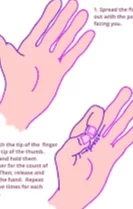
The thumb’s range of motion is enhanced by finger touches. To carry out these:
- Raise the fingers straight up, palm facing up.
- Holding this position for five seconds, bend the thumb across the palm to contact the base of the pinky finger.
- Return the thumb to its starting position.
- Repeat this motion, touching the bases of the other fingers with the thumb.
- Five times over, repeat this set.
Gentle Fist
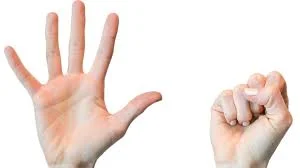
Hand motion may be encouraged by practicing the art of creating a soft fist. To carry out this:
- Spread the fingers as wide as you can as you open your hand.
- Using the thumb over the other fingers, gently form a fist.
- Avoid stretching up too much.
- Keep the position for forty-five seconds.
- One should perform this five times per day.
In addition to not hurting, this ought to make the hand feel more flexible and open.
Finger Flexing
The thumb’s range of motion is enhanced by finger touches. To carry out these:
- Raise the fingers straight up, palm facing up.
- Holding this posture for five seconds, bend the thumb across the palm to contact the base of the pinky finger.
- Repeat this motion, contacting the bases of the other fingers with the thumb.
- Five times over, repeat this set.
Finger Stretch

This may assist in increasing the range of motion by simultaneously stretching all of the fingers. To carry out this:
- Place the hand flat on a table, palm down, to begin.
- To ensure that the fingers rest against the table as straight and flat as possible without injuring the joints, apply minimal pressure.
- Release the position after up to 60 seconds of holding it.
- Five times a day, do this.
Fingertip stretch
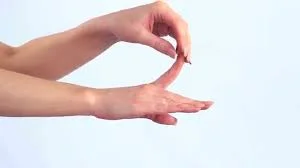
The tips of the fingers may move more freely because of this stretch. To carry out this:
- With the palm facing the body, hold the hand vertically.
- Touch the top of the palm with the fingertips as you bring them down.
- After 30 seconds, hold this position and then release it.
- On each hand, repeat this five times a day.
Grip and pinch strengtheners
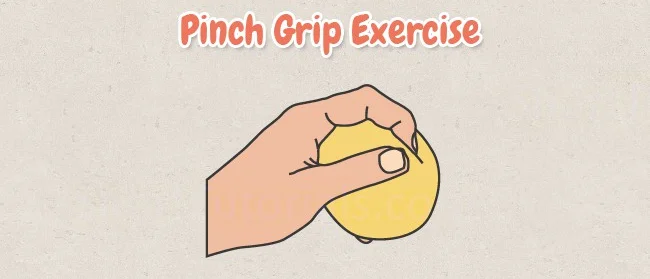
Additionally, doctors could suggest grip and pinch strengthener activities. When someone squeezes or pinches these soft, bouncy balls or putty, some resistance is provided.
Here are some pointers for putting them to use:
- Grip strengtheners should be squeezed as firmly as you can without hurting yourself.
- For a short while at a time, maintain the posture, then let go.
- Aim to perform the exercise ten to fifteen times a day.
- To give each hand a chance to relax, it may be a good idea to switch hands on various days.
- Pinch a softer pinch strengthener between all five fingers as firmly as you can without hurting yourself.
- Try to perform the exercise fifteen times a day, holding the pinch for no more than thirty seconds before releasing it.
It’s crucial to work out with these instruments to strengthen your hand and finger muscles.
Home remedies
A person with stiff fingers can alleviate some of their discomfort by doing certain at-home exercises. Among them are:
- using cold or heat packs to the affected fingers using aspirin or other nonsteroidal anti-inflammatory medications
- performing hand exercises to recover range of motion
- putting lotions or gels containing capsaicin on the affected fingers
- In situations of acute injury or trauma, resting the affected fingers and minimizing their usage
Splints or casts
- Splints, like ring splints, can help stiff fingers operate better, stay aligned, and stop abnormalities from getting worse.
- A normal range of motion can be restored and the finger stabilized with the use of splints.
- This might cause the constricted tissue to stretch.
- When used for 6–9 weeks, splinting can be beneficial for the trigger finger and result in a 60% cure rate.
Alternative treatments
A doctor will probably take into consideration the following strategies to cure the pain if the reason for the stiff fingers is more recurring and if the stretches or home treatments do not relieve the symptoms.
Natural treatments
Your hands may feel less stiff, swollen, or painful after using several natural therapies. Among the instances are:
- Turmeric
- Fish oil
- Ginger
- Green tea
- Willow bark
- Devil’s claw
- Boswellia
It’s crucial to remember that not enough studies have been done to demonstrate the efficacy of these strategies. Furthermore, several natural remedies might not be suitable for specific medical problems or can have adverse consequences. Consult a physician before to using them.
Over-the-counter (OTC) medications
A number of over-the-counter (OTC) NSAIDs have the potential to lessen inflammation and discomfort. Among them are:
- Ibuprofen (Advil, Motrin)
- Naproxen (Aleve)
- Aspirin
- Acetaminophen (Tylenol)
Prescription medications
If your hand stiffness is due to RA or PsA, your doctor may prescribe a prescription to assist in reducing inflammation and stopping additional joint deterioration. Among the drugs are:
- COX-2 inhibitors, like etoricoxib and celecoxib
- corticosteroids
- DMARDs, or disease-modifying anti-rheumatic medications, include sulphasalazine and methotrexate.
- biologicals
Splints and casts
Casts and splints aid in stabilizing a sore joint that may have resulted from trauma, surgery, or overuse. Long-term usage of a cast or splint can weaken muscles. When it’s taken out, you might need to perform hand exercises.
Steroid injections
When over-the-counter drugs fail to relieve pain, stiffness, and inflammation in a joint, steroid injections may provide temporary relief. However, due to possible adverse effects, such as weakening of tendons and ligaments, they may only be administered a certain number of times.
Corticosteroids
To relieve the affected area, a physician could administer a corticosteroid injection. For someone with osteoarthritis, rheumatoid arthritis, or a trigger finger, this could be an alternative. Because they are anti-inflammatory, corticosteroids might lessen inflammation in some ailments.
Injection-related side effects of steroids can include:
- Pain
- Bleeding
- A flare reaction
- Infection
- An elevation in blood glucose levels in diabetics
After receiving a corticosteroid injection for stiff fingers, the patient should refrain from using the affected fingers for at least three days and from gripping or tightening their fingers for three weeks.
Enzymes
Proteins called enzymes help the body’s processes go more quickly. The enzyme collagenase is responsible for degrading collagen. If a patient is a good candidate for a collagenase injection, the physician will inject the enzyme into the cords associated with Dupuytren contracture. The doctor will physically tear the cords once the enzyme disrupts them. According to some studies, 96.6% of patients had at least one mild-to-moderate adverse reaction after receiving enzyme injection, such as:
- Pain at the injection site
- Bruising
- Tenderness
- Itchiness
- Flushing
- Blisters
- Upper limb pain
Surgery
The patient could need surgery if the reason for their stiff fingers is more serious or if other forms of treatment haven’t worked effectively for them. Some surgical options are described in the sections below.
Limited fasciectomy
For fingers that are stiff, this includes surgically eliminating the cords to increase movement. The most often-used surgical method is this one. This kind of surgery can be necessary for someone with Dupuytren contracture if their disease has not improved with enzyme injections or if it is severe.
Tenolysis
Tenolysis may be necessary if a tendon problem is the root of the person’s tight fingers. In order to regain range of motion, a tendon must be surgically released or freed. In extreme circumstances, tendon repair may be necessary.
Synovectomy
A synovectomy or other joint surgery may be necessary for an individual with arthritis. This includes removing the injured synovium or the joint lining surgically. This might enhance hand function and momentarily lessen discomfort.
Carpal tunnel release
A procedure called carpal tunnel release surgery may be necessary for a patient with carpal tunnel syndrome. Governmental jurisdiction for the National Institute of Neurological Disorders and Stroke
This includes making a surgical incision in the wrist ligament. This may lessen the symptoms of stiff fingers by releasing pressure from the median nerve.
When to see a doctor
Consult a physician if you have any of the following symptoms of hand stiffness:
- occurs following an injury
- happens in addition to ongoing discomfort and edema
- affects how freely your fingers or wrist can move
- neither improves nor worsens when receiving at-home care
- greatly impairs your capacity to do daily tasks
A physician can assist in identifying the reason behind your hand stiffness and suggest a suitable course of action.
Conclusion
It can be difficult to have stiff fingers, and typical causes include arthritis or little injuries. Health problems with the hand’s muscles, connective tissues, or bones might be the cause in certain instances. A physician can determine the reason and suggest the most effective line of action.
Taking painkillers, bracing the fingers, Physical Therapy, injecting enzymes and corticosteroids, and having surgery are some of the available treatment options. Exercises are typically used in conjunction with therapy, and stretches for the hands and fingers can assist in avoiding stiffness.
FAQ
What is the reason behind the fingers’ stiffness?
Arthritis is the most prevalent cause of tight fingers. One of two forms of arthritis may be the cause of your hand and finger discomfort and stiffness. The loss of cartilage in your hand or fingers as a result of an injury or aging-related wear and tear is what causes osteoarthritis.
How can I prevent my fingers from getting tense?
Taking painkillers, bracing the fingers, injecting enzymes and corticosteroids, and having surgery are some of the available treatment options. Exercises are typically used in conjunction with therapy, and stretches for the hands and fingers can assist in avoiding stiffness.
Why do my fingers get stuck?
When the tendon controlling that finger becomes stuck in its surrounding sheath, a trigger finger occurs. This might happen if there is a little lump or if a portion of the tendon sheath swells. We refer to this bulge as a nodule. Tough cords called tendons connect muscle to bone.
Is it possible for diabetes to create stiff fingers?
Symptoms of diabetic cheiroarthropathy can include a wide range, such as: being unable to flex or stretch the fingers to their fullest. finger extension that happens on its own. swollen or stiff fingers that are occasionally accompanied by discomfort.
Is this significant hand stiffness?
Hand stiffness can result from a variety of illnesses, including infections, arthritis, overuse, falls, and trauma. With time, some of these ailments may be managed at home, while others need to be treated by a doctor in order to fully recover.
References:
- Common Causes of Finger Stiffness – The Orthopaedic Institute. (2022, July 4). The Orthopaedic Institute. https://www.toi-health.com/physician-articles/common-causes-finger-stiffness/
- Roth, E. (2023, November 21). Easy Exercises to Prevent Hand Stiffness. Healthline. https://www.healthline.com/health/psoriatic-arthritis/prevent-stiffness#takeaway
- Johnson, J. (2023, January 12). Causes and treatments for stiff fingers. https://www.medicalnewstoday.com/articles/326867


